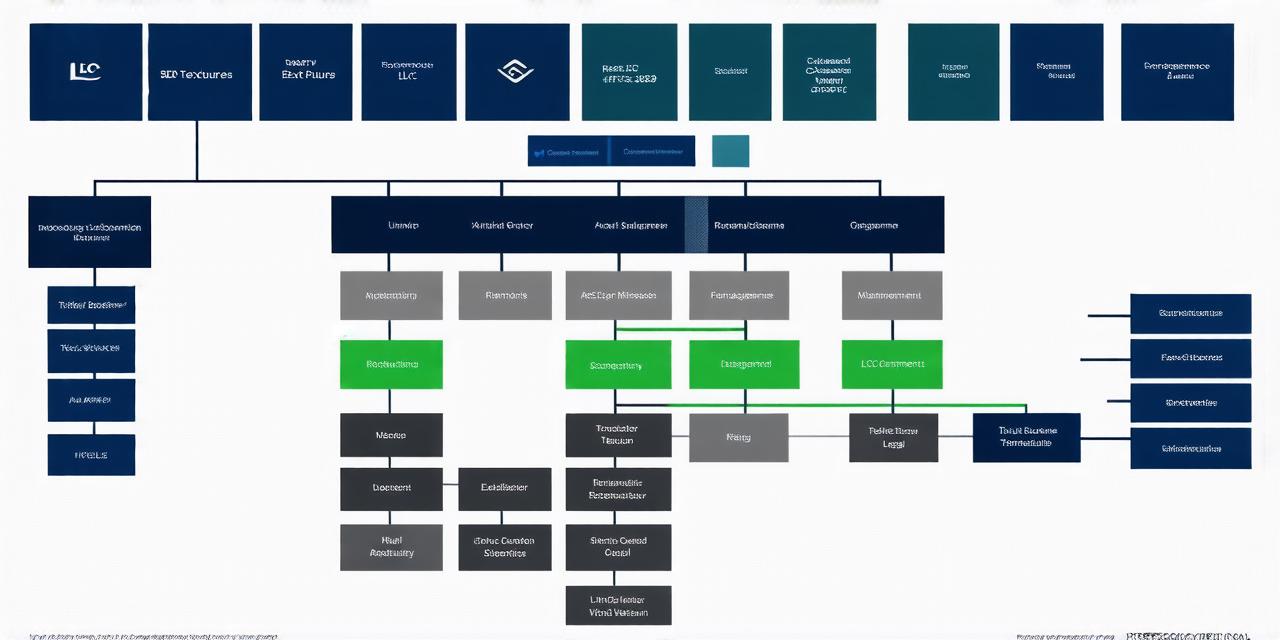An LLC (Limited Liability Company) is a popular business structure for small and medium-sized businesses. Unlike traditional corporations, LLCs offer personal liability protection to its members while still allowing them the flexibility of partnership ownership. However, one of the most important aspects of an LLC is its organizational structure. In this guide, we will discuss the different types of LLC organizational structures and their pros and cons, so that you can make an informed decision when forming your business.
Understanding LLC Organizational Structure: What Are The Different Types?
<h2>There are two main types of LLC organizational structures: member-managed and manager-managed.</h2>

Member-Managed LLCs
<p>In a member-managed LLC, all members have an equal say in the day-to-day operations of the business. This means that they are actively involved in the running of the business and make decisions together through group consensus. Members of a member-managed LLC are responsible for managing the business operations and handling administrative tasks.
One of the main advantages of a member-managed LLC is its flexibility. Members can easily adapt to changes in the business and are able to quickly respond to new opportunities. However, it can also be challenging to manage group decision-making processes, especially as the number of members grows. Additionally, members may have different levels of expertise and experience, which can lead to conflicts or disagreements.
<em>Manager-Managed LLCs</em>
In a manager-managed LLC, some members are appointed as managers to handle the day-to-day operations of the business. These managers are responsible for making decisions, managing finances, hiring employees, and other operational tasks. The remaining members act as shareholders, providing capital and participating in the business’s strategic direction.
The main advantage of a manager-managed LLC is its efficiency. Managers can make quick decisions without having to consult with all members, leading to faster response times and more streamlined operations. Additionally, managers can focus on their specific areas of expertise, which can lead to better decision-making and outcomes.
<em>Case Study: The Success Story of XYZ LLC</em>
XYZ LLC is a successful member-managed LLC that has been in operation for over 10 years. Founded by five entrepreneurs with diverse backgrounds and skill sets, the business initially operated as a small consulting firm, providing services to startups and small businesses. As the business grew, the members decided to transition to a more formal organizational structure.
Today, XYZ LLC has 10 full-time employees and generates over $5 million in annual revenue. The business operates as a member-managed LLC, with each member taking an active role in the day-to-day operations of the business. While there have been some challenges along the way (such as conflicts between members), the group has been able to overcome these obstacles through open communication and teamwork.
One of the key factors in XYZ LLC’s success is its focus on collaboration and teamwork. Members are encouraged to share their ideas, expertise, and insights, leading to better decision-making and more innovative solutions. Additionally, the group has been able to adapt quickly to changing market conditions, taking advantage of new opportunities as they arise.
<em>Real-Life Examples: Best Practices for LLC Organizational Structure</em>
When deciding on an organizational structure for your LLC, there are several best practices to keep in mind. Here are some real-life examples of how other successful businesses have implemented these principles:
- Clearly Define Roles and Responsibilities: In any organizational structure, it’s important to clearly define the roles and responsibilities of each member. This helps to prevent conflicts and ensures that everyone is on the same page. For example, in a manager-managed LLC, the managers should have clear job descriptions outlining their responsibilities, as well as specific expectations for performance.
- Encourage Open Communication: Effective communication is essential for any successful


